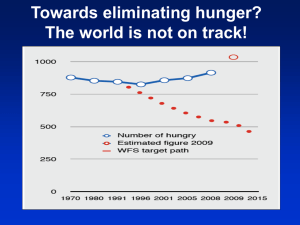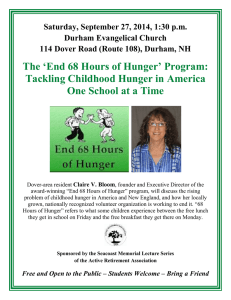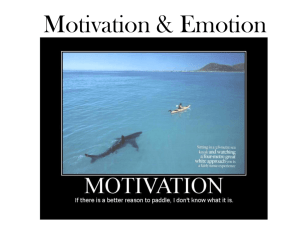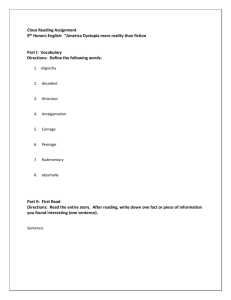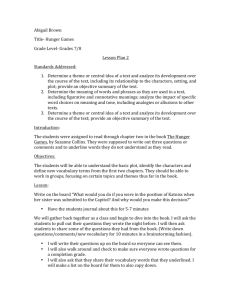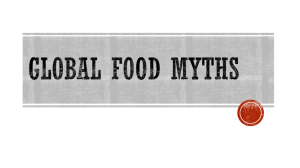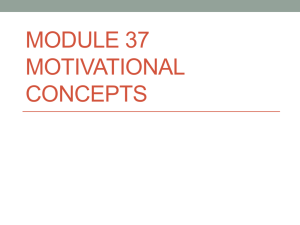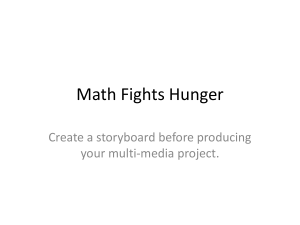Motivation
advertisement
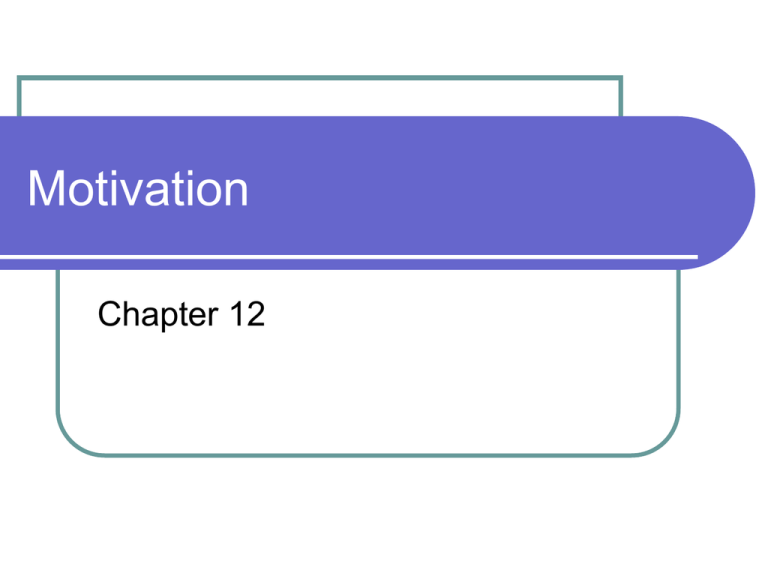
Motivation Chapter 12 Motivation Concepts Drive reduction theory Need (food, water) Drive (hunger, thirst) Drives and Instincts Drive-Reducing Behaviors (eating, etc) Homeostasis Push of need and pull of incentives Yerkes-Dodson Law “good” vs. “bad” Maslow’s Hierarchy of Needs “Humanistic Perspective” Physiology of Hunger WWII Hunger Study Stomach Contractions Body Chemistry Glucose level and caloric intake The Brain Hypothalamus Lateral (sides) – brings on hunger Ventromedial (middle) – suppresses hunger Sends info to frontal lobe Set-point Basal metabolic rate Psychology of Hunger “Externals” Cultural Influences Eating Disorders Anorexia/Bulimia Sexual Orientation “Sexual orientation is like handedness – most people are one way, a few the other. A very few are truly ambidextrous” Gay parents DO NOT produce gay children Factors in orientation Certain cell clusters within the hypothalamus are larger in hetero- men than in either women or homosexual men About 50% of identical twins share homosexuality Prenatal hormone exposure The Need to Belong Aiding Survival Wanting to Belong Social Acceptance Conformity Health Issues Achievement Motivation (AM) Levels of AM People with high levels prefer challenging tasks, with lower levels prefer either really easy or impossible tasks Motivation more closely linked with success than “natural talent” IQ is distributed in a bell curve, motivation is not What “causes” motivation? Emotional and cognitive roots More AM Internal vs. External Motivation Leper and Green’s overjustification effect Reward Motivation vs. Incentive Motivation Motivating People I/O Psychology Task vs. social leadership Theory X vs. Theory Y
